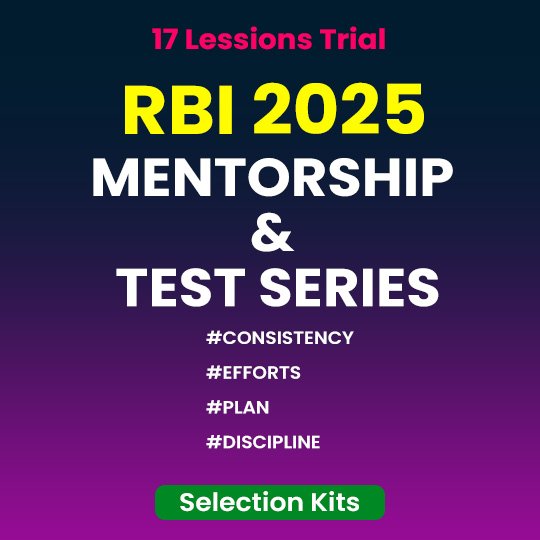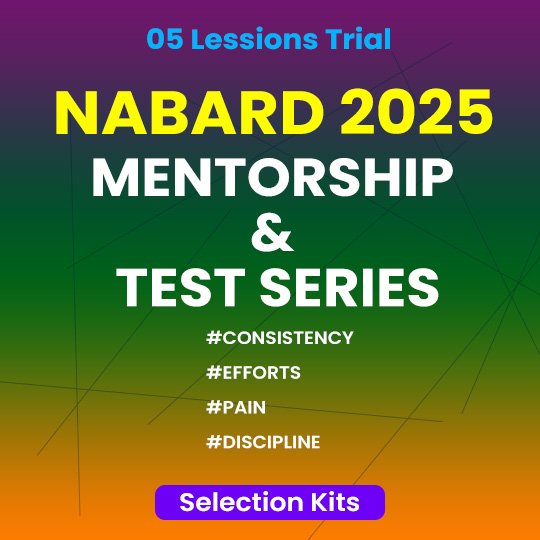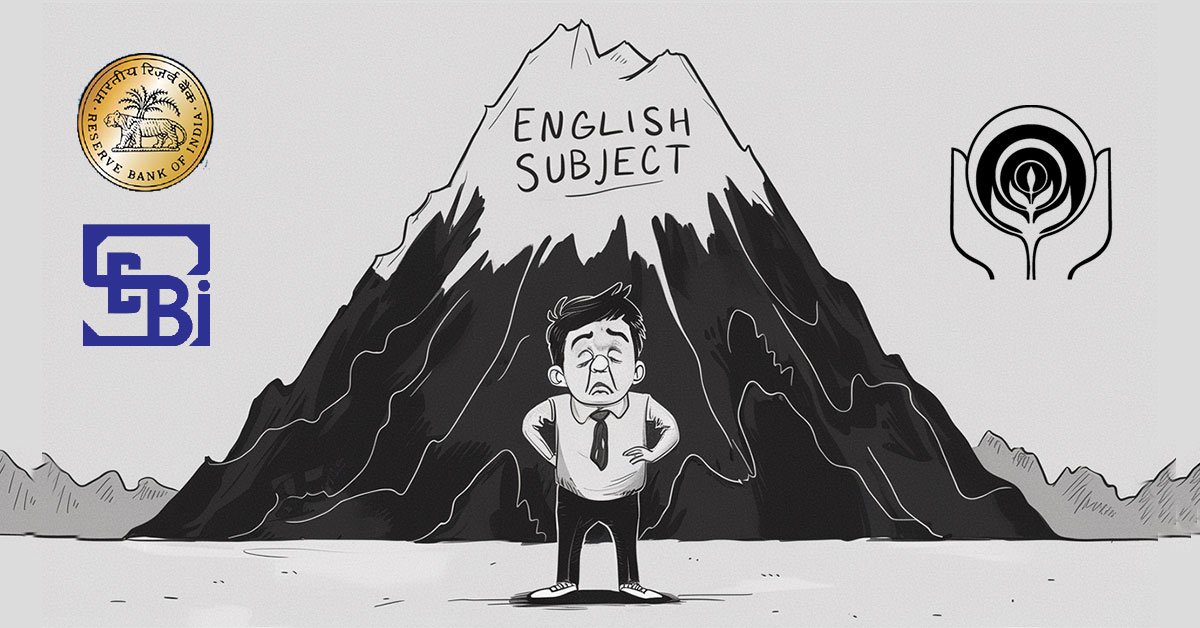Daily Current Affairs Quiz
10 July, 2025
National Affairs
1. Starlink Receives IN-SPACe Approval to Operate in India
Context:
On July 9, 2025, IN-SPACe (Indian National Space Promotion and Authorisation Centre), under the Department of Space, granted authorisation to Starlink to operate its satellite broadband services in India. This marks a significant regulatory step for Elon Musk’s SpaceX-owned Starlink, which has long awaited full clearance to launch operations in the country.
IN-SPACe (Indian National Space Promotion and Authorisation Centre)
- IN-SPACe, the Indian National Space Promotion and Authorisation Centre, is an autonomous agency under the Department of Space (DoS) in India.
- Its primary role is to facilitate and regulate the participation of non-governmental entities (NGEs) in the space sector, acting as a bridge between private players and ISRO.
Importance of IN-SPACe Authorisation
- Allows Starlink to deploy its satellite constellation over Indian territory.
- Enables broadband coverage in remote and underserved areas lacking mobile infrastructure.
- A key step before commercial rollout of satellite internet services.
What Is Starlink?
- A low-Earth orbit (LEO) satellite network operated by SpaceX.
- Provides high-speed, low-latency internet globally, including in rural and remote locations.
- Particularly beneficial for geographies underserved by fiber or mobile networks.
2. National Population Register (NPR)
Context:
The Government of India has initiated preparatory discussions for Census 2027, but no final decision has been taken yet on updating the National Population Register (NPR) during this exercise, according to senior Home Ministry officials.
What is NPR?
The National Population Register (NPR) is a comprehensive database of “usual residents” of India. A usual resident is defined as someone who has stayed in a local area for at least 6 months or intends to stay for the next 6 months. It includes both Indian citizens and foreign nationals.
Background and Legal Framework
- Introduced under: Citizenship Act, 1955
- Rules: Citizenship (Registration of Citizens and Issue of National Identity Cards) Rules, 2003
- Nodal Agency: Registrar General and Census Commissioner, Ministry of Home Affairs
- First Collected: In 2010, updated in 2015 through a door-to-door survey.
Features and Process
- Mandatory: Registration is legally compulsory for all usual residents.
- Enumeration Method: House-to-house survey during the census’s house-listing phase.
- Inclusivity: Covers citizens and non-citizens residing in India.
- Levels of Compilation: Local (village/town) → Sub-district → District → State → National.
- Possible Outcome: Issue of a National Identity Card based on NPR data.
- Authority: Registrar General acts as National Registration Authority.
3. Petroleum & Natural Gas Rules, 2025
Context:
The Ministry of Petroleum & Natural Gas has released a draft policy framework to modernise India’s upstream oil and gas sector. The draft rules aim to replace outdated regulations and align with evolving energy, environmental, and investment needs.
Key Features:
- Stabilisation Clause:
- License holders will be protected from future increases in taxes or royalties. They can claim compensation or deductions in case of policy changes affecting their financial terms.
- Third-Party Access Mandate:
- Lessees must declare any underutilised capacity in pipelines and facilities. Fair and transparent access will be ensured under government oversight.
- Green Energy Integration:
- The rules permit solar, wind, hydrogen, and geothermal projects within existing oilfields. This supports India’s net-zero targets and promotes hybrid energy use.
- Environmental Safeguards:
- Greenhouse gas (GHG) monitoring, site restoration, and carbon capture and storage (CCS) are made mandatory. Post-closure monitoring will continue for five years.
- Data Ownership and Access:
- All operational data generated under these rules will be owned by the Government of India. External use will require prior approval, and confidentiality will be maintained for up to seven years.
- Dispute Resolution Framework:
- A dedicated Adjudicating Authority at the rank of Joint Secretary will handle disputes, ensure compliance, and levy penalties where necessary.
- Contractual Reforms:
- New model contracts will allow for unitisation (joint development of shared reservoirs), lease mergers, and easier relinquishment of non-viable blocks.
- Legal Modernisation:
- The new rules will replace the Petroleum Concession Rules (1949) and Petroleum & Natural Gas Rules (1959), aligning them with the amended Oilfields Act, 1948.
Implications
- These reforms could boost private investment by reducing regulatory risks and transaction costs.
- They align fossil fuel operations with India’s climate goals, particularly through CCS and renewable integration.
- The rules enhance transparency via stronger data governance and independent adjudication.
- Operational flexibility through shared infrastructure and contractual ease could unlock more efficient resource use.
Banking/Finance
1. SEBI Proposes Expanded Role for Credit Rating Agencies
Context:
The Securities and Exchange Board of India (SEBI) has released a consultation paper proposing to expand the permitted activities of Credit Rating Agencies (CRAs) beyond securities listed or proposed to be listed on stock exchanges. The draft is open for public comments until 30 July 2025.
Credit Rating Agencies (CRAs)
Credit Rating Agencies (CRAs) are organizations that assess the creditworthiness of borrowers, like companies or governments, and assign ratings to their debt instruments. These ratings reflect the agency’s opinion on the likelihood that the borrower will repay its debts, including principal and interest, on time. Investors use these ratings to gauge the risk associated with investing in those debt instruments.
Current Regulatory Gap
- SEBI regulations currently restrict CRAs to rating listed or to-be-listed securities.
- CRAs can rate financial instruments under other financial sector regulators (FSRs) like RBI or IRDAI only if those regulators have issued relevant guidelines.
- A lack of such guidelines from some FSRs has led to ambiguity over CRA roles in rating unlisted financial instruments.
Key Proposals in the Consultation Paper
Current Norms:
- CRAs are currently allowed to rate only those securities that are:
- Listed or proposed to be listed on SEBI-recognised stock exchanges.
- Governed under SEBI regulations.
SEBI’s Key Proposal:
- CRAs may be allowed to rate financial instruments regulated by other FSRs (e.g., RBI, IRDAI, PFRDA) even if:
- The respective regulator has not issued detailed CRA guidelines.
- The instrument is not listed or proposed to be listed on an exchange.
Conditions:
- Ratings must be:
- Fee-based: The CRA receives a professional fee.
- Non-fund-based: No financing or credit exposure involved.
2. Catastrophe Bonds (Cat Bonds)
Context:
India faces increasing exposure to climate-induced disasters such as floods, cyclones, forest fires, and earthquakes. Despite this, disaster risk insurance penetration is low, leaving much of India’s population and property uninsured and financially vulnerable. In this context, catastrophe bonds (cat bonds) offer an innovative risk-transfer mechanism that India could adopt.
What are Catastrophe Bonds (Cat Bonds)?
Cat Bonds are specialized financial instruments that combine insurance and debt features, used to transfer disaster-related risks (like earthquakes, cyclones) from governments or insurers to capital market investors.
Key Features
- Hybrid Instrument: Insurance-cum-debt product that securitizes catastrophe risk.
- Risk Transfer: Moves risk from sponsor (like a sovereign government) to global investors.
- Tradability: Makes hazard insurance cover a tradable security.
- Trigger-Based Payouts: Provides pre-defined, quick payouts post-disaster.
How Cat Bonds Work
| Element | Description |
|---|---|
| Sponsor | Sovereign nations or insurers who issue cat bonds to transfer risk. |
| Premium | Paid by the sponsor; the principal equals the insured amount. |
| Intermediary | Institutions like the World Bank, ADB, or reinsurance firms to issue and manage risk. |
| Investors | Pension funds, hedge funds, and family offices who take on risk in return for higher coupon rates. |
| Coupon Rates | Higher than standard bonds due to risk; varies by hazard (e.g., 1–2% for earthquakes, higher for hurricanes). |
| Loss of Principal | Investors may lose part of the principal if a catastrophe occurs. |
Benefits of Cat Bonds
- For governments: Access to fast, reliable disaster relief funding.
- For investors: Portfolio diversification and non-correlated, higher-yield investment.
- For global markets: Larger pool of capital available for disaster risk management.
Why India Needs Cat Bonds
- Rising Climate Risk
- India ranks high on hazard exposure, with increasing frequency and intensity of disasters.
- Traditional insurance markets may fail to price or cover such risks affordably.
- Low Penetration of Disaster Insurance:
- Unlike life insurance, most Indian assets and livelihoods remain uninsured against disasters.
- Public Finance Risk:
- Without financial buffers, governments are forced into fiscal distress post-disaster.
- Regional Opportunity:
- India could sponsor a South Asian cat bond covering multi-country events (e.g., cyclones, tsunamis, earthquakes).
3. RBI’s Whitelist and Key Safety Guidelines
Context:
The Reserve Bank of India (RBI) has published a list of authorised digital lending apps (DLAs) on its website to help borrowers distinguish between regulated and fraudulent apps. This move is part of its ongoing effort to safeguard digital lending in India and ensure consumer protection.
Why This Matters
- RBI-registered DLAs follow regulatory norms like:
- Digital Lending Directions
- Fair Practice Code
- Mandatory disclosures (KFS, loan agreements, etc.)
- Fraudulent loan apps often operate without regulation, exploit users, and use coercive or abusive tactics during loan recovery.
Risks of Using Unauthorised Loan Apps
- Hidden Charges & High Interest: Exorbitant interest (10–20% per month) and steep penalties.
- No Transparency: Lack of proper disclosures and loan documents.
- Data Exploitation:
- Access to contact lists, photo galleries
- Social shaming by messaging family and friends
- Misuse or morphing of private photos
- Abusive Recovery Practices: Harassment by recovery agents.
4. RBI Issues Draft Guidelines on Novation of OTC Derivative Contracts
Context:
On July 10, 2025, the Reserve Bank of India (RBI) released draft guidelines proposing a structured mechanism for novation of over-the-counter (OTC) derivative contracts. This move aims to enhance transparency, fairness, and legal certainty in OTC derivatives markets.
What is Novation?
Novation is a legal process that replaces an existing contract with a new one by substituting one counterparty while maintaining identical contractual terms (except the party change).
- Parties Involved in Novation:
- Transferor: Original party who exits the contract.
- Transferee: New party entering the contract.
- Remaining Party: The party that remains unchanged and continues in the new contract.
Key Features of the RBI Draft Guidelines
- Consent Requirement
- Novation can occur only with the explicit consent of the remaining party.
- Tripartite Agreement
- A formal tripartite agreement among the transferor, transferee, and remaining party is necessary.
- Fair Valuation and Market Rates
- Novation must occur at prevailing market rates.
- The mark-to-market value must be exchanged between transferor and transferee to reflect financial fairness.
- Standardised Documentation
- RBI has asked FIMMDA (Fixed Income Money Market and Derivatives Association of India) and FEDAI (Foreign Exchange Dealers’ Association of India) to:
- Develop standard documentation based on international best practices.
- Alternatively, participants can use a standard master agreement.
- RBI has asked FIMMDA (Fixed Income Money Market and Derivatives Association of India) and FEDAI (Foreign Exchange Dealers’ Association of India) to:
- Regulatory Reporting
- All novated transactions must be reported to the Trade Repository of CCIL (Clearing Corporation of India Ltd) in compliance with existing norms.
5. Non-Performing Assets (NPAs) in India
Context:
India’s large stockpile of Non-Performing Assets (NPAs) is often seen as a reflection of inefficiency in the banking sector. However, it also presents a significant investment opportunity due to the steep discounts offered in bank-led property auctions—often 20–30% below market value. Despite this, real estate investors have largely stayed away from this sector due to multiple structural and regulatory challenges.
What are NPAs?
NPAs are loans or advances where the borrower has stopped making interest or principal repayments for a specified period, typically 90 days. When a loan turns into an NPA, it is classified into different categories based on its aging and recoverability. Banks are required to maintain provisions for such assets, which can affect their overall profitability and lending capacity.
Classification of NPAs
Banks classify NPAs into different categories based on the time elapsed since the due date:
- Substandard Assets:
- Loans that remain non-performing for up to 12 months. These assets carry a higher risk, but there is still a reasonable expectation of recovery.
- Doubtful Assets:
- Loans that have remained substandard for more than 12 months. The probability of recovery becomes significantly lower, and banks need to provide a higher provision for these assets.
- Loss Assets:
- Loans where the bank or auditors have determined that the recovery is unlikely, though they may not be fully written off from the bank’s books. These assets represent a complete erosion of the bank’s capital if not handled properly.
SARFAESI & IBC
- SARFAESI Act (2002):
- Enables lenders to seize and auction secured assets without court intervention after a 60-day notice.
- Insolvency and Bankruptcy Code (IBC, 2016):
- Introduced a time-bound resolution process for corporate defaults.
- Increased transparency and reduced timelines for recovery.
Challenges remain
- Delays due to institutional bottlenecks and lack of digital integration.
- Inconsistent implementation at the state/local level.
Technology-Driven Solutions
- AuctionBazaar, a digital platform, is addressing key inefficiencies by:
- Providing searchable property listings.
- Offering legal due diligence, valuation support, and e-auction facilitation.
- Handling post-auction compliance and documentation.
BS
6. CAMS Launches CAMSPay Gateway for Secure Digital Transactions
Context:
Computer Age Management Services (CAMS), a key fintech infrastructure provider in India, has launched a new CAMSPay Payment Gateway tailored to meet the evolving regulatory and technological needs of the digital payments landscape.
Key Highlights:
- Launch Objective:
- CAMSPay aims to deliver compliance, scalability, and high-performance digital transaction processing in alignment with RBI’s mandates.
- Regulatory Compliance:
- Designed to meet RBI’s tokenisation and data localisation norms.
- Fully certified by Mastercard, VISA, and Rupay for payment security and compliance.
- Performance Capabilities:
- Can process 5,000+ transactions per second (TPS).
- Offers real-time analytics, dashboards, and robust reliability.
- Strategic Partners:
- Built with Mylapay as the technology partner.
- Supported by RBL Bank as the BIN (Bank Identification Number) sponsor.
- Current Sector Usage:
- Already serving entities in BFSI, NBFCs, fintech, and education.
- Expansion plans include capital markets, insurance, and brokerages.
Economy
1. India’s Gini Index of 25.5
Context:
A recent World Bank Poverty and Equity Brief pegged India’s Gini index at 25.5 for 2022–23, making it appear among the most equal countries globally. However, the figure—based on consumption inequality, not income or wealth—has raised eyebrows among economists and policymakers alike.
Understanding the Gini Coefficient
- Gini Index: A measure of inequality within a population; 0 represents perfect equality, 100 indicates maximum inequality.
- India’s 25.5 figure is based on consumption expenditure, which generally underestimates inequality compared to income or wealth-based metrics.
Data Highlights
- Gini Index (Consumption):
- Improved from 28.8 in 2011–12 to 25.5 in 2022–23.
- Extreme Poverty:
- Fell from 16.2% to 2.3% over the same period.
- However, data suffers from:
- Underreporting by the rich.
- High non-response rates among affluent urban households.
- Structural underestimation of inequality.
Why the Debate Matters
Wage Inequality
- In 2023–24, the top 10% of earners made 13 times more than the bottom 10%.
- Large segments of the workforce remain in informal, low-paying jobs (e.g., self-employment, casual labour).
Regional & Spatial Inequality
- Rural vs Urban MPCE Gap: Still 70% in 2023–24.
- Interstate Disparities:
- Rural Tamil Nadu MPCE is nearly double that of Jharkhand.
- Urban Telangana MPCE is 70% higher than in Bihar.
- These gaps reveal deep developmental imbalances.
Wealth and Intergenerational Inequality
- Wealth inequality and intergenerational transfers are excluded from consumption surveys.
- These factors significantly skew the real distribution of economic power.
BS
Agriculture
1. Indian Astronaut Shubhanshu Shukla Conducts Agri-Biotech Experiments on ISS
Context:
Indian astronaut Shubhanshu Shukla, during the final leg of his mission aboard the International Space Station (ISS), participated in several cutting-edge biological and agricultural experiments under India’s collaborative space science programme with Axiom Space and ISRO.
Key Scientific Experiments Conducted:
Space Germination of Indian Crop Seeds
- Seeds Used: Green gram (moong) and fenugreek (methi)
- Objective: Study the impact of microgravity on seed germination and early plant development.
- Method: Seeds sprouted in petri dishes, photographed, and stored in a space freezer for return to Earth.
- Post-Mission Plan:
Seeds to be cultivated over multiple generations to observe:- Genetic adaptations
- Microbial ecosystem shifts
- Changes in nutritional profiles
Microalgae Deployment
- Studied for their ability to produce food, oxygen, and biofuels.
- Valuable for long-duration space missions due to their:
- High adaptability
- Efficient oxygen generation
- Sustainability in closed-loop ecosystems
Space Crop Breeding
- Six plant varieties grown with the aim to:
- Identify desirable genetic traits
- Enable sustainable space farming through genetic analysis
Stem Cell Research
- Focus on testing if microgravity and supplements can:
- Accelerate cell repair or recovery
- Improve stem cell-based injury healing or tissue growth
Significance of the Research
- Pioneers astro-agriculture and space biomedicine using indigenous Indian crops.
- Lays foundation for space-based life support systems, crucial for future Mars or lunar missions.
- Enhances India’s contribution to global space biology research.
2. National Fish Farmers Day 2025
Context:
National Fish Farmers Day 2025 was celebrated on 10th July to acknowledge the vital contribution of India’s fish farmers in ensuring food security, enhancing employment, and promoting sustainable aquaculture as part of the country’s growing Blue Economy.
Key Highlights:
Key Announcements
- Launch of new Fisheries Clusters.
- Release of ICAR Training Calendar.
- Launch of seed certification and hatchery operations guidelines.
- Virtual foundation stone laying and inauguration of PMMSY-supported projects.
Govt. Schemes
- Pradhan Mantri Matsya Sampada Yojana (PMMSY)
- The Pradhan Mantri Matsya Sampada Yojana (PMMSY) is a flagship scheme launched by the Indian government to promote the sustainable and responsible development of the fisheries sector.
- Launch Date: 2020
- Ministry: Ministry of Fisheries, Animal Husbandry and Dairying.
- The Pradhan Mantri Matsya Sampada Yojana (PMMSY) is a flagship scheme launched by the Indian government to promote the sustainable and responsible development of the fisheries sector.
Facts To Remember
1. Equity Mutual Fund Inflows Rise 24% in June 2025
As per the Association of Mutual Funds in India (AMFI), net inflows into equity mutual funds surged by 24% in June 2025, reaching ₹23,587 crore, up from ₹19,213 crore in May. This marks a rebound after the 22% dip in net equity inflows seen in May — the lowest in nearly a year.
2. Silver in 94kg for Parv in Asian junior weightlifting
Parv Chaudhary has claimed a silver medal in the men’s 94kg category at the Asian junior weightlifting championships in Astana.
3. Wrestlers Varun and Rohit make do with silver
Indian Greco Roman wrestlers, Varun (63kg) and Rohit (87kg), landed silver medals at the Asian under-20 championships in Bishkek, Kyrgyzstan.
4. AIFs Seek Higher Investment Limits for Banks, NBFCs in RBI Draft Norms
Alternative Investment Funds (AIFs), through industry body Indian Venture and Alternate Capital Association (IVCA), have urged the Reserve Bank of India (RBI) to ease the investment limits proposed for Regulated Entities (REs) like banks and NBFCs under the draft circular dated May 19, 2025.
5. India’s Maize Productivity: Regional Successes & National Challenges
According to a FICCI–Yes Bank report based on the Ministry of Agriculture’s third advance estimates (2024–25 crop year), India’s average maize yield is 3.5 tonnes/hectare, significantly lower than the global average of 6 tonnes/hectare. However, select Indian states are outperforming global leaders like China, Brazil, and Russia.
6. Sahil Kini Appointed CEO of Reserve Bank Innovation Hub
Sahil Kini, a well-known name in the Indian fintech space, has been appointed as the new CEO of the Reserve Bank Innovation Hub (RBIH).
7. DELIVERY OF FIRST INDIGENOUS DIVING SUPPORT VESSEL – ‘NISTAR’
Nistar’, the first indigenously designed and constructed Diving Support Vessel, was delivered by Hindustan Shipyard Limited to the Indian Navy at Visakhapatnam. The warship has been designed and built as per classification rules of the Indian Register of Shipping (IRS). The ship is highly specialised and can undertake Deep Sea Diving and Rescue Operations – a capability with select Navies across the globe.
8. Namibia to launch a UPI-based digital payment system later in 2025.
This follows an agreement between the National Payments Corporation of India (NPCI) and the Bank of Namibia signed in April 2024. Namibia becomes one of the few African countries adopting India’s digital public infrastructure model.















